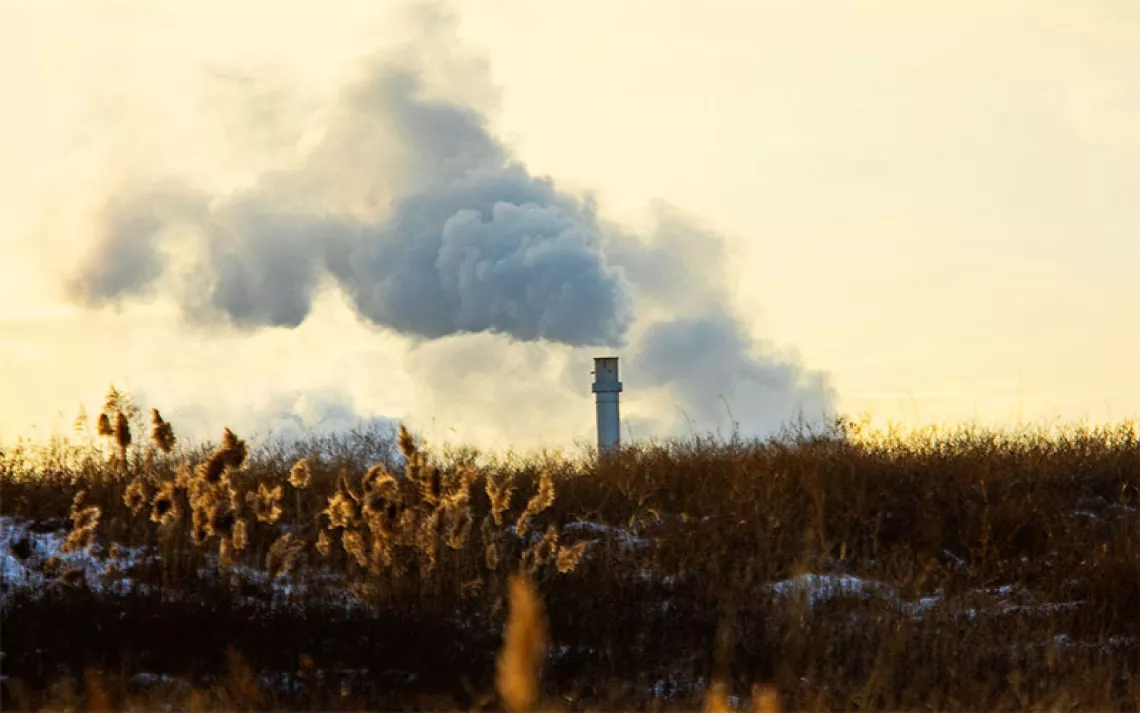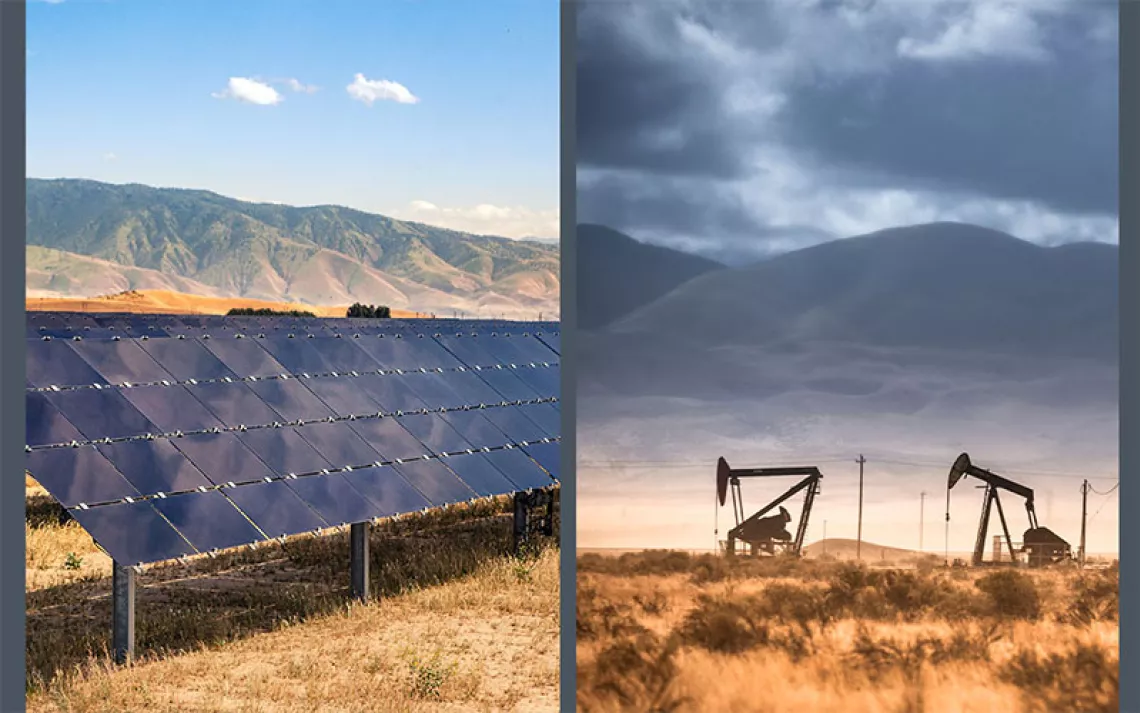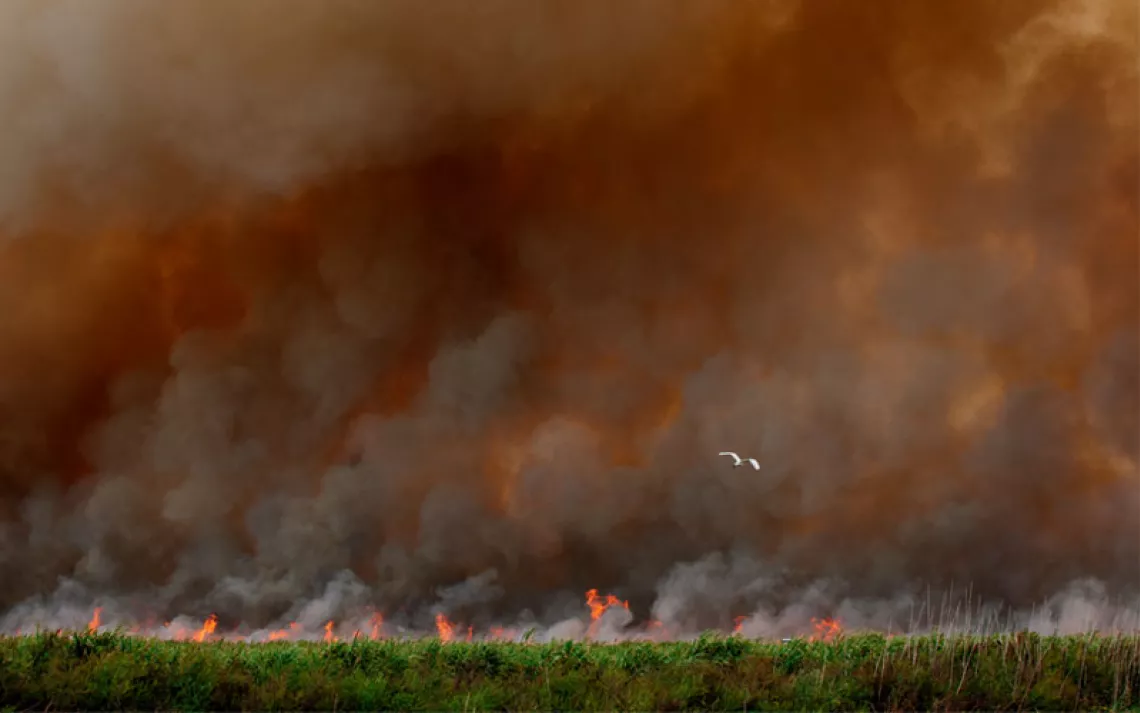The EPA Clears the Air in Utah's National Parks

Arches National Park in Utah. | Photo by iStockphoto_ventdusud
Two hundred miles southeast of Salt Lake City in Utah’s geologically blessed redrock country, a milky haze forms in the air, obscuring the region’s spectacular views more than 300 days a year. Its presence owes to a number of factors: Traffic that backs up in Arches and Canyonlands National Parks, seasonal wildfires, even burning trash, a practice that Utah’s lawmakers have not yet seen fit to outlaw.
But by far the largest contributors to the problem are two coal plants 100 miles to the east of Canyonlands—Hunter and Huntington—which currently belch tens of thousands of tons of smog-forming chemicals, nitrogen oxides and soot, into the atmosphere.
The West’s prevailing winds carry that pollution across the San Rafael Swell to Moab, the national parks’ gateway city, where it undergoes a chemical transformation that blights the arresting scenery people travel from far away to behold. It also irritates the lungs of mountain bikers, rock climbers, and hikers who come to Moab to breathe deeply—nitrogen oxides help form ground-level ozone, a known asthma trigger.
On Wednesday, the EPA at long last announced a plan to curtail emissions from all four of Hunter and Huntington’s coal-fired generators. The decision marks a milestone in the agency’s nearly-20-year-old effort to reduce haze in Class I airsheds such as national parks and wilderness areas, an undertaking that’s been pushed along by lawsuits brought by the Sierra Club, the National Parks Conservation Association, and other organizations concerned with air quality.
Most states with Class I areas have already established plans to reduce haze—some, such as Texas, have already undergone their five-year evaluations—but Utah has held out. That’s in part because, contrary to air-quality modeling by the National Park Service, the official position of the state’s air board is that new technology at the coal plants won’t clear the gauzy air that mars visibility, not just near Moab but in all five of the state’s prized national parks. A 2011 state plan to reduce haze offered only minimal emissions cuts from the coal plants. A revised plan last year improved little on the first.
So now the EPA will impose its own plan to address nitrogen oxide pollution in Utah’s atmosphere. It will require the plants’ owner, Rocky Mountain Power, a subsidiary of energy giant PacifiCorp, to install standard “selective catalytic reduction” technology to cut three-quarters of the plants’ combined nitrogen oxide emissions. (The agency at the same time approved a state plan to address fine particulate matter from the plants, another component of haze.)
PacifiCorp spokesman David Eskelsen says the utility is "disappointed" with the EPA's decision, adding that it will lead to higher electrical rates for its customers without significant air-quality benefits. "We are evaluating all legal options," he says, "in the best interest of our customers."
For environmentalists and health advocates in the state, the announcement comes as a satisfying validation of a vigorous public education crusade, one that resulted in more than 55,000 comments submitted to the EPA in support of stringent pollution retrofits at Hunter and Huntington.
“The EPA rightly determined that Utah’s ‘Mighty Five’ national parks need the same air-quality protections as those in neighboring states. Utah will now be held to the same standard as Wyoming, Colorado, and Arizona,” says Lindsay Beebe, organizing representative with the Sierra Club’s Beyond Coal Campaign in Utah.
The decision also signals a fundamental shift in the relationship between the EPA and outdoor-recreation advocates, who have previously been more focused on protecting land and less concerned about air quality, says Ashley Korenblat, the managing director for the open-space advocacy group Public Land Solutions and a mountain-bike outfitter.
“The EPA is going to play a key role in future gateway communities,” she says. “This ruling is an important step toward a strong future for central Utah.”
For more on the history of Utah’s air-quality issues, read Sierra magazine's feature story "Coal Versus Recreation in Utah."
 The Magazine of The Sierra Club
The Magazine of The Sierra Club



